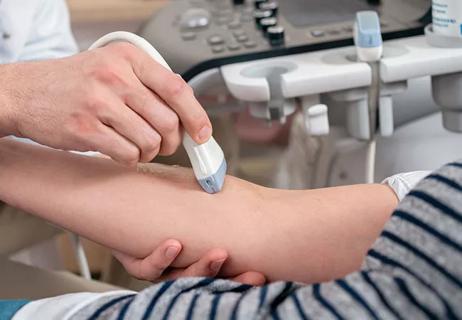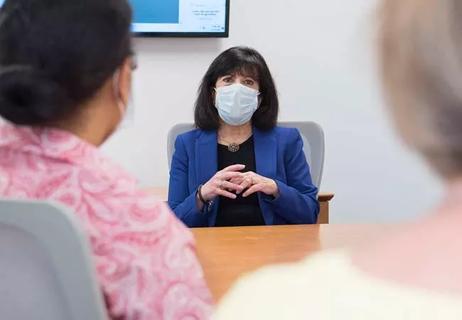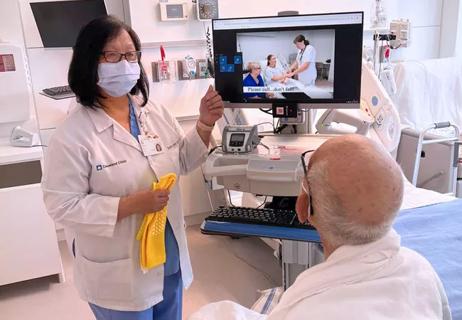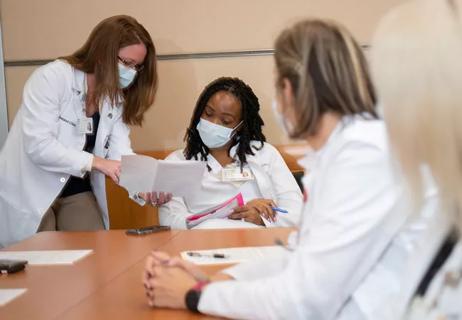Nurse researcher analyzes the concept of rest

All nurses have probably encouraged patients to “get some rest.” But what, exactly, does that mean? Are they recommending that patients sleep soundly through the night, take a nap, relax in a chair or take a walk to clear their minds? Esther Bernhofer, PhD, RN-BC, CPE, Senior Nurse Researcher at Cleveland Clinic, analyzed the concept of rest in the article “Investigating the concept of rest for research and practice” in the May 2016 issue of the Journal of Advanced Nursing.
Advertisement
Cleveland Clinic is a non-profit academic medical center. Advertising on our site helps support our mission. We do not endorse non-Cleveland Clinic products or services. Policy
Dr. Bernhofer’s quest to better define the meaning of rest began years ago, when she was a mother of four young daughters and pregnant with her son. The midwife suggested that she get some rest. “I looked at her and asked, ‘When? How? Do you mean sleep?’ It was so ambiguous, and yet the need was there,” says Dr. Bernhofer. “I recognized that she was right. I needed to rest, but I didn’t know how.”
As a nurse, Dr. Bernhofer has offered the same advice to patients countless times. The concept seems simple in theory, but is less so when put into practice. “Mankind has always known that rest is clearly important, and we offer that advice to everyone we love,” says Bernhofer. “But we don’t really know what it means.”
Dr. Bernhofer sought to find a consistent use and meaning of rest in current scientific literature and to present a theoretical definition of rest, which could then provide a strong basis for research and practice. “Without a clear definition of rest and understanding of its parameters, its restorative benefits may not be realized and the advice to rest, based on little evidence, has limited usefulness and unknown risks,” posits Dr. Bernhofer in her article in the Journal of Advanced Nursing.
Dr. Bernhofer began by querying scientific peer-reviewed literature of five healthcare disciplines that recommended rest for patients: nursing, medicine, physical therapy, psychology and occupational therapy. She took into consideration 27 articles published between 1970 and 2015. Dr. Bernhofer used the Morse criterion-based method of concept investigation. “The goal was to come up with a definition of rest that healthcare practitioners could work with to move to the next step of defining rest for patients, removing some of the ambiguity and measuring the benefits of rest,” she says.
Advertisement
Dr. Bernhofer concluded that the epistemological, pragmatic, linguistic and logical descriptions of rest found in the literature “remain immature, poorly defined, rarely operationalized and inconsistently used.” However, she says a basic understanding of rest emerged, including these three primary types of rest:
Through the literature review, Dr. Bernhofer formulated a theoretical definition of rest: Rest is a beneficial state that is intentional, temporary and restorative. Rest involves cessation, minimization or change in physical, mental or spiritual work, fatigue, trauma, illness or stress.
Advertisement
Dr. Bernhofer adds that further research is necessary, beginning with qualitative investigations, to advance the concept of rest and move toward an operational definition and perhaps a new nursing middle-range theory. It would be beneficial to begin by querying physicians, nurses and other practitioners on what they mean when they prescribe rest and what they think it means to their patients.
“A definition and understanding of rest is important so that healthcare providers can help patients get the rest they need and eventually find out how much and what type of rest is most effective,” says Dr. Bernhofer. “Right now we only recommend rest based on a personal and subjective experience. We are working with only the lowest level of evidence.”
Advertisement
Advertisement

Study shows ultrasound can be valuable tool for improving patient satisfaction by reducing failed IV insertions

New system uses vital signs to predict need for further intervention

Findings reveal personal and professional factors that influence nurses’ interest in medical research

Nurse scientists bridge divide between bench and bedside

Individual and population factors play a role

Study looks at cardiopulmonary arrest and activation rates

Video education and nurse-led reinforcement help with fall risk awareness

Further research into collaborations may help strengthen nursing science